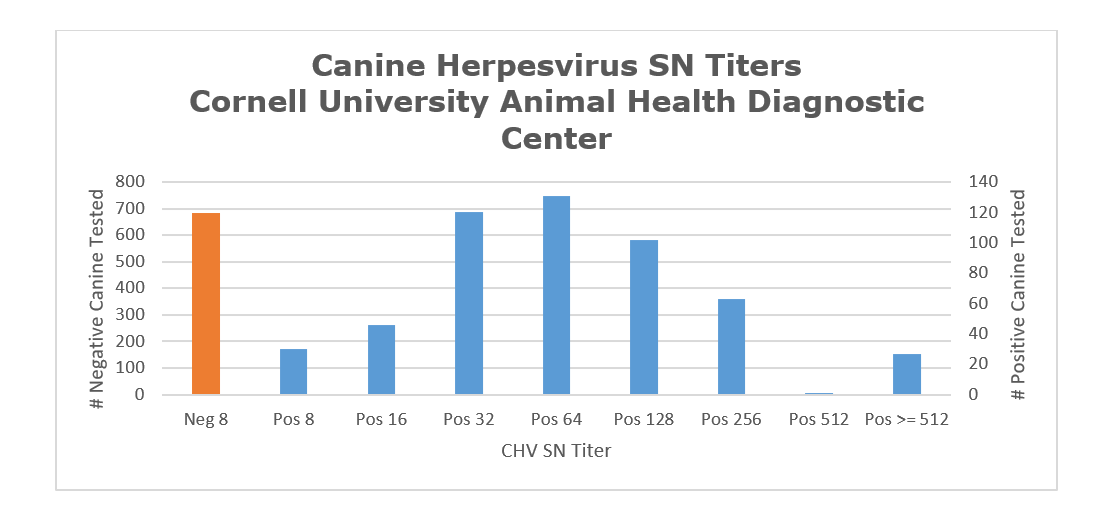Canine Herpesvirus Serum Neutralization
Canine herpesvirus (CHV) or Canid alphaherpesvirus 1 is in the order Herpesvirales, family Herpesviridae, subfamily Alphaherpesvirinae, genus Varicellovirus. As a typical alphaherpesvirus, it shares many of the properties common to this group of viruses. As such, most infections are subclinical and the virus establishes latency in the host for the life of the animal. Virus can recrudesce at unpredictable intervals in many instances with no overt signs. It is through this is the mechanism that enable virus spread and persistence in the canine population.
The most significant clinical findings linked to CHV infections are respiratory signs, ocular lesions and neonatal mortality which is by far the issue of most concern. Neonatal mortalities most frequently occur within the first two weeks of life. The etiology of this syndrome is the infection of a sero-negative pregnant dog late in gestation so that there is infectious virus in the environment and with too little time for the antibodies to be present in the colostrum to provide passive protection to the puppies. Usually a dog should lose only one litter of puppies to CHV as subsequent litters will be protected from the clinical disease by the neutralizing antibodies in the colostrum. For owners that are concerned about the neonatal puppy infections, it is very helpful to know the serological status of the animals that might be bred. Antibody positive animals are of no concern but antibody negative animals should be managed to avoid exposures during the pregnancy. As there are no licensed vaccines for CHV in the US, all antibody positive animals should be considered latently infected and capable of spreading the virus.
The chart below represents the positive CHV neutralizing antibody reports (520) issued by the AHDC from a total of 1203 test requests or a sero-prevalence of 43.2%. As these are not random samples stratified by age or geographic region, the canine population sero-prevalence may be different. These submissions also include animals that were suspected of having a clinical event due to a CHV infection as well as a screening tests for the breeding population. Interpreting the significance of an antibody titer is difficult without knowing the timing of the infection. Early acute infection values may be in the range of titers for latently infected animals (Pos 16- Pos 64). When values exceed Pos 128, this is most consistent with a recent infection. NOTE: Antibody titers at the AHDC are reported as the reciprocal of the highest dilution capable of completely inhibiting/blocking CHV infection/replication (dilution at the 100% endpoint, e.g., 1:64 = Pos 64).



